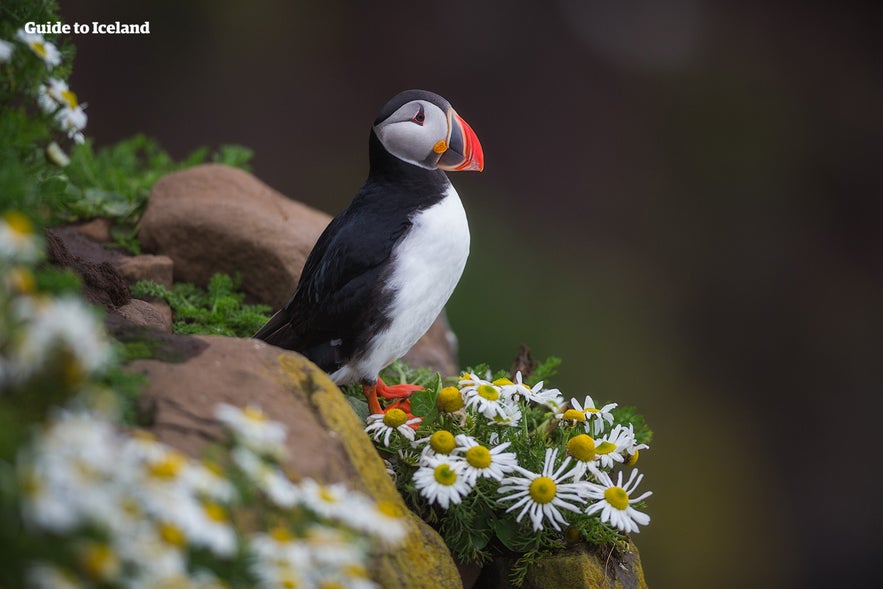
The Látrabjarg cliffs in the Westfjords mark both the westernmost point of Iceland and Europe. Hosting millions of birds, it is Europe’s largest bird cliff, 14 km (9 mi) long and 441 (1,444 ft) high.
It takes around six hours to reach Látrabjarg from Reykjavík, so it is recommended that visitors travel there as part of a wider trip around the beautiful Westfjords.
当サイトの情報が信頼できる理由
Guide to Iceland (ガイド・トゥ・アイスランド)は、アイスランドで最も信頼されている旅行プラットフォームです。毎年、何百万人もの旅行者にご利用いただいています。 すべてのコンテンツは、アイスランドに精通した現地の専門家が執筆・監修しており、 常に正確で最新の情報を提供しています。 信頼できる旅のアドバイスをお探しなら、ぜひ当サイトをご活用ください。
Birdwatching at Látrabjarg
Látrabjarg is home to a wide variety of birds, in large parts thanks to the shelter and seclusion the cliffs provide as nesting grounds.
It is not only the variation of species that makes Látrabjarg such an awe-inspiring place and undoubtedly one of the world’s best birdwatching locations; the sheer volume of individuals is staggering, with some estimating over five million nesting here in summer.
The main species are Skuas, Arctic Terns, Guillemots, Eider Ducks and Razorbills. Of course, however, the stars of the show are the Atlantic Puffins.

At least a million puffins nest here, often very near to the top of the cliff. As they are protected here, they have very little fear of people, and will let them within feet for some great photo opportunities.
You should not, however, get too close to puffins for a variety of reasons. Firstly, they nest on sheer cliff faces, so a slip could send you falling. Secondly, puffins burrow rather than nest, making the surface of the cliff edge even more unstable; even if you caught yourself before tumbling, you could still crush an egg or a chick. Thirdly, puffins are socially aware animals, and if one flies off in a panic, it is common for all others to follow, spoiling the moment for everyone and putting chicks and eggs at risk.
Be aware the puffins can only be found at Látrabjarg from May until late August.
The Rescue at Látrabjarg
In 1947 Látrabjarg was the site of a famous act of heroism, in the form of a dramatic rescue. The British trawler Dhoon capsized, like so many other boats have, beneath Látrabjarg. Only twelve of its crew members survived the tumultuous, rocky ocean, pulling themselves up at the base of the cliffs.
They would have no doubt died of hypothermia, if not for the fact that they were seen by local farmers. Though 190 metres (632 feet) above them, with time of the essence, the farmers knew exactly what to do.
For generations, Icelanders had scaled down the cliffs of Látrabjarg on ropes to collect eggs and feathers, a practice that continues to this day. The farmers, therefore, put their harnesses on, scaled down, and pulled all twelve sailors to safety.









